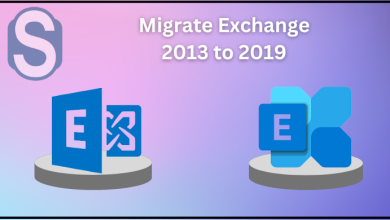Top RPA Trends to Watch Out For in The Fintech Industry

With the development and growth of computer processing capabilities, the fintech industry is seeing a rapid transition. Modern information technology can offer advanced software to carry out human tasks. The banking, financial services, and insurance (BFSI) firms are now prepared to adopt the latest automation technology, Robotic Process Automation(RPA), to reduce the shortage of qualified workers and increase efficiency at a low cost. The Financial Sector is rapidly witnessing turbulence caused by the global pandemic and economic instability. Amidst the COVID-19 scenario, banks are searching for any opportunity to reduce expenses while boosting income. In the banking sector, RPA is a crucial digital transformation facilitator.
RPA is a convenient option and mandatory for the sector to gain a competitive edge. According to Gartner, the market value of RPA solution is predicted to be $2.4 billion in 2022, up from $250 million in 2016. And from 2020 to 2027, it is anticipated to expand at a CAGR of 33.6 percent.
What is RPA in Fintech and Banking Sector, and how does it work?
RPA is a type of automated software used in businesses to automate certain repetitive processes. This specialized software executes recurring, rule-based, and high-volume tasks in the Banking and Fintech sectors. To decrease the manual work required to execute accounting and transactions, it uses software like UiPath and Blue Prism.
RPA in the Fintech and Banking sectors adheres to a preset workflow that accurately directs the software robot on what actions to take. This software knows the correct keystrokes to press, follows the instructions, and launches the relevant apps automatically to carry out important activities. Several banks and financial organizations use RPA for repetitive processes, including customer KYC, account opening, client inquiries, etc.
Let’s Start With the Future Trends of RPA in the Fintech Industry
1) Intelligent automation
In 2021, the RPA market was anticipated to be worth USD 1.89 billion, according to Gartner. This number is expected to increase with intelligent automation at the forefront of RPA in the BSFI industry. From 2018 to 2023, the intelligent automation market is expected to expand at a CAGR of 12.9% each year, and trends indicate that these solutions will help operation teams automate various corporate tasks. Thanks to intelligent automation, financial institutions can read data from several sources and apply a rules-based method for processing applications more quickly. This includes loan application tracking, asset management, lowering operational expenses, and speeding up banking operations.
2) Customer experience
One of the major focuses of implementing RPA technologies in finance and accounting services is complete process reengineering. With this information, banks can identify every phase of the client experience and design processes that optimize flows. Customers may map out their financial data using RPA, which provides an intuitive user interface and helps them efficiently navigate business challenges. According to studies, banks spend $60 million USD yearly on average automating corporate treasury and KYC Compliance operations.
3) New product launches RPA
Automation is used for introducing innovative services and for launching new products. Banks are creating lending applications for consumers who wish to apply for loans online. RPA workflows are used worldwide in important operations, including processing financial transactions, reading KYC papers, managing customer relationships, and responding quickly to inquiries. Customer onboarding and offboarding procedures, workflows, and financing automation are all turned into user-friendly interactions.
4) No more paperwork
Banks and entrepreneurs can wave goodbye to paperwork thanks to RPA automation. By keeping their data online and eliminating the requirement for paper-based document storage, businesses will save millions of hours in 2022. Employees will no longer be required to do time-consuming duties, allowing them to concentrate on finance-related operations that are more profitable.
5) Optical Character Recognition (OCR)
RPA-related technology called optical character recognition (OCR) is used for digitizing data from scanned documents and transmitting it into ERP systems. The storage and analysis of unstructured materials are major obstacles in document processing. OCR is connected with intricate business procedures to automatically extract data from various documents and organize it into simple, readable formats. Banks use OCR solutions to monitor financial transactions, produce fraud reports, and update their general ledgers to improve how their performance reports are presented to stakeholders and consumers.
Benefits of RPA in the Finance Sector
The majority of the Financial Sector uses RPA to automate accounting procedures. RPA is increasingly essential for the Finance Sector because of the following advantages:
1) Reduces human errors
By assuring accuracy, RPA processes in the finance sector and assists staff in reducing data input mistakes. Banks benefit from competitive advantages by accelerating transactions, processing data, and obtaining accurate and trustworthy information. 32% of businesses automate every operation.
2) Scalable
The finance sector can use RPA tools to modernize outdated systems and make data models scalable. Bots handle massive amounts of data, lower expensive personnel costs, and transition to new systems.
3) Predictive analytics
The finance sector uses RPA procedures to evaluate and gain deeper insights from their data. Better reporting and pattern prediction in client data submissions result from this.
4) Ensures regulatory compliance
The finance sector has to take care of legal compliance concerns and ensure data complies with state laws. By guaranteeing that data integrity is preserved, it is of a high standard, and it conforms with the law, RPA technologies guarantee financial success.
5) Cost Saving
Although RPA provides several cost-saving options, with any new software solution, managing, deploying, maintaining, and training the bots incurs an initial startup cost. The cost reductions start to materialize as soon as three months, especially over the long run. When it comes to manual and data-intensive procedures, RPA technology typically costs one-third less than an offshore person and one-fifth of an onshore employee, according to research by Gartner. The ROI was quickly visible due to increased production and decreased labor costs, which resulted in cost-effectiveness.
PPC trends to watch out for in 2021
Use-cases of RPA In The Finance Sector
Unlike humans, RPA systems can process data continuously and without interruption. The most common RPA application use cases in the Finance Sector are:
1) Finance account reconciliations
Comparing account balances and guaranteeing accurate transaction data is one of the issues in the Finance Sector. Data from numerous accounts is pulled using RPA technologies, then compared and verified.
2) Process invoices
Banks and accounts payable divisions of businesses utilize RPA to create and automate invoice processing. There are several formats for invoices, and RPA technologies can handle millions of documents in multiple formats.
3) Purchase order processing
RPA automates the processing of purchase orders and streamlines shipping via OCR and machine learning. RPA helps automate data extraction from paper-based documents for transactions and guarantees that data is complete.
4) Vendor contract compliance
Technology excels in vendor compliance, where RPA processes guarantee that the terms and conditions are followed. By scanning invoices, RPA bots may extract key-value pairs like discounts, vendor information, rebates, etc.
5) Know your customer (KYC) and Anti-Money laundering (AML)
Due to their high data requirements, KYC and AML procedures are best suited for RPA. RPA deployment has proven crucial in time and money savings compared to traditional banking solutions, whether automating tedious processes or spotting fraudulent financial activities.
5 Digital Tech Trends to Watch in 2022
Wrapping Up
The fintech industry is under a lot of pressure to streamline processes, increase productivity, and reduce operating costs to increase profit margins. Only by implementing Robotic Process Automation(RPA), this industry can become future-ready.
As these are rapid solution providers, simple to deploy, and more affordable than large-scale transformations, several financial institutions have already adopted this intelligent automation. Now is the moment for banks, fintech companies, and other financial institutions to include RPA in their solutions because, when appropriately used, RPAs may provide enormous benefits.




